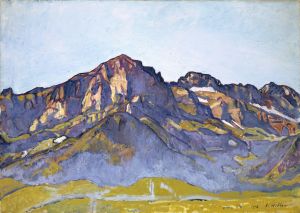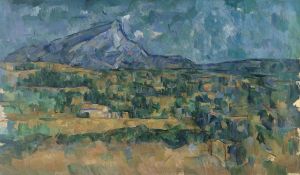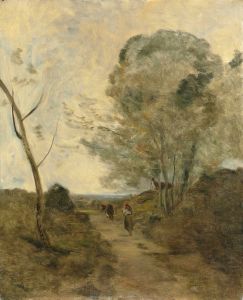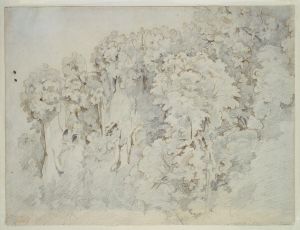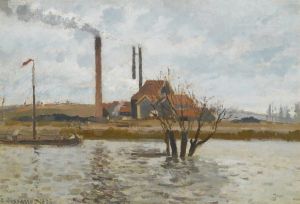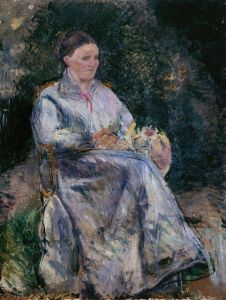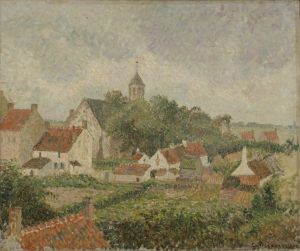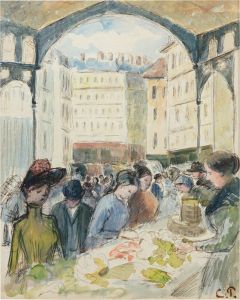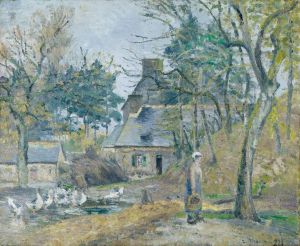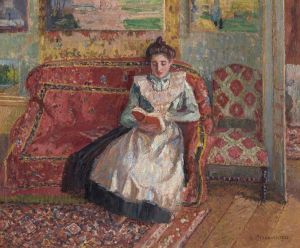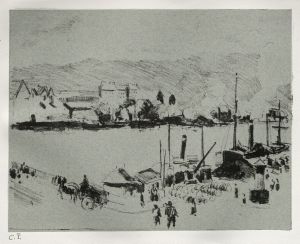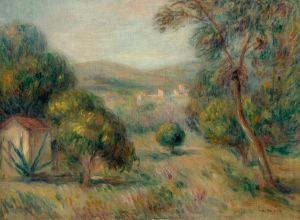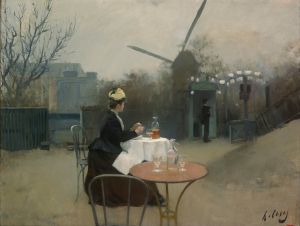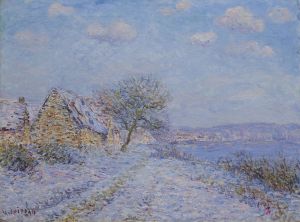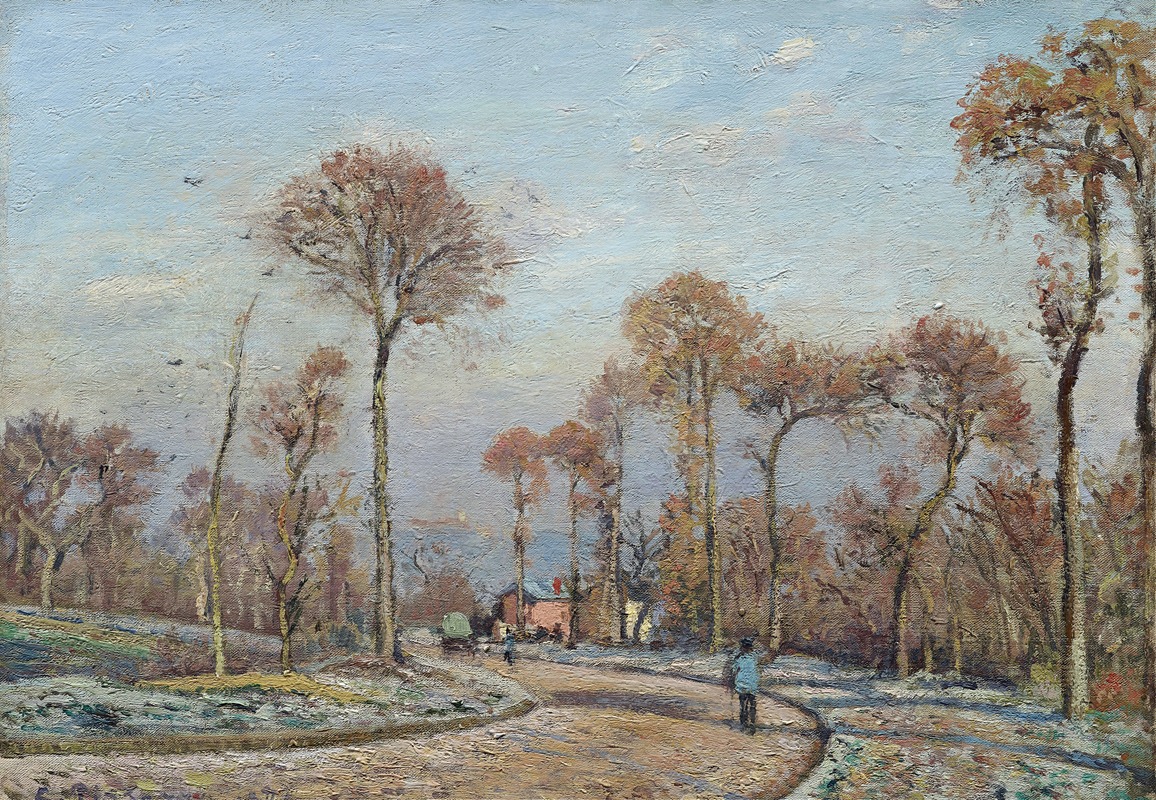
The Road to Versailles, Louveciennes,Morning Frost
A hand-painted replica of Camille Pissarro’s masterpiece The Road to Versailles, Louveciennes,Morning Frost, meticulously crafted by professional artists to capture the true essence of the original. Each piece is created with museum-quality canvas and rare mineral pigments, carefully painted by experienced artists with delicate brushstrokes and rich, layered colors to perfectly recreate the texture of the original artwork. Unlike machine-printed reproductions, this hand-painted version brings the painting to life, infused with the artist’s emotions and skill in every stroke. Whether for personal collection or home decoration, it instantly elevates the artistic atmosphere of any space.
Camille Pissarro, a prominent figure in the Impressionist movement, painted "The Road to Versailles, Louveciennes, Morning Frost" in 1871. This artwork is a quintessential example of Pissarro's ability to capture the subtleties of light and atmosphere, a hallmark of the Impressionist style. The painting depicts a serene rural scene in Louveciennes, a village in the Île-de-France region, where Pissarro lived for several years. This location was a frequent subject in his works, providing a rich tapestry of natural beauty that inspired many of his landscapes.
"The Road to Versailles, Louveciennes, Morning Frost" illustrates a quiet road leading towards Versailles, enveloped in the delicate light of a frosty morning. The painting is characterized by its soft, muted color palette, which effectively conveys the chill and stillness of the early morning. Pissarro's brushwork is loose and fluid, capturing the transient effects of light on the frost-covered landscape. This technique allows the viewer to almost feel the crispness of the air and the crunch of frost underfoot.
Pissarro's choice of subject matter reflects his interest in rural life and the changing seasons, themes that were central to his work. The painting is devoid of human figures, focusing instead on the natural elements and the interplay of light and shadow. This approach underscores Pissarro's dedication to portraying the natural world with authenticity and sensitivity.
During the time Pissarro painted this work, he was deeply influenced by the burgeoning Impressionist movement, which sought to break away from the rigid conventions of academic painting. Impressionists like Pissarro aimed to capture the fleeting moments of everyday life, emphasizing the effects of light and atmosphere over detailed realism. "The Road to Versailles, Louveciennes, Morning Frost" exemplifies these principles, showcasing Pissarro's skill in rendering the ephemeral qualities of a specific moment in time.
The historical context of this painting is also significant. It was created shortly after the Franco-Prussian War, a period of upheaval that affected many artists of the time. Pissarro himself experienced displacement during the war, which may have influenced his focus on serene and peaceful landscapes as a form of solace and stability.
Today, "The Road to Versailles, Louveciennes, Morning Frost" is celebrated for its contribution to the Impressionist movement and its reflection of Pissarro's artistic vision. The painting is housed in the collection of the Musée d'Orsay in Paris, where it continues to be admired by art enthusiasts and scholars alike. Pissarro's work remains influential, and this painting, in particular, is a testament to his mastery of capturing the beauty and tranquility of the natural world.





